Do Women Have to be Naked To Get Into the Met Museum?
We're talking about guerrillas... and also gorillas!
Howdy, readers 👋🏻
Today’s a fun one! We’re talking about one of my favorite feminist activist groups… the Guerrilla Girls!
Guerrilla Girls 🦍

Contrary to what you may think before jumping into this newsletter, the Guerrilla Girls are not an animal activist group… at least not directly. They are a group of anonymous feminist artist activists who expose gender and racial bias in art, film, and pop culture. They often use “guerrilla” tactics like quippy headlines or striking visuals to get their point across. But, that is a very boring description of what they do… it’s better if I show you.
Let’s jump in our time machine to 1985. We’re headed to the Museum of Modern Art (MoMA) in New York City to see their new exhibit “An International Survey of Recent Painting and Sculpture.” The exhibit was meant to be a display of the ~most important and influential artists~ in our time. It featured 165 artists… and guess how many were women? THIRTEEN 😠. A guess how many were women of color? ZERO 🤬. Some women protested outside the museum about the lack of gender and racial diversity, but it wasn’t a particularly effective. Most people just walked by and some were even annoyed at the protest. That’s when it clicked… they needed a strategic, savvy, in your face strategy that people couldn’t ignore. They put their heads together and formed the Guerrilla Girls. Let’s show some examples of some of their first campaigns.
See what I’m saying? Instead of saying “hey, these art museums and art galleries don’t have art by women or people of color,” they used humor, wit and punchy images to get their point across. People already knew these statistics, but it wasn’t moving the needle. Using these tactics caused people to stop and think. Also, it’s hard to disagree when they write it so bluntly.
Initially, there was a deep divide in the art world between those who supported the Guerrilla Girls and those who loathed them. However, over time, they achieved success in both calling attention to the blatant discrimination in the art world and prompting people to think more critically about art. For the GG’s, discrimination goes deeper than art. It’s a mirror representing what we value in society.
“Our goal is to get people to think about things they haven’t thought about already because the more you deep dive into discrimination, it’s about all kinds of other things. It’s about the economy. It’s about history. It’s about all kinds of things that people might not be aware of.” -Frida Kahlo (Guerrilla Girls Founding Member, not the actual Frida) in an interview with BUILDHOLLYWOOD
How did they come up with the name Guerrilla Girls? According to an interview with a founding member, they liked the idea of being guerrilla girls in terms of guerrilla tactics to disrupt the art world. They started out wearing balaclavas and other more traditional disguises. But, one day, a woman in the group misspelled “guerrilla” as “gorilla,” which led to the gorillas being their mascot and identity shield. Some members have complex feelings about the masks because of the racist history associated with monkeys and gorillas. They also specifically chose the name “girls” instead of “women” because of how commonly women were infantilized, especially when criticized.
How do they identify themselves? Because the GG’s are anonymous, each member chooses the name of a lesser known female artist as their Guerrilla Girls name. For example, I listened to an NPR interview with one of the founders who goes by Kathe Kollwitz, a German artist. I read an interview with Kollwitz and Frida Kahlo.
How do you become a Guerrilla Girl? It’s based on member referral! Members have friends who they think would be a good fit and invite them to join the group.
The Guerrilla Girls use more than just art to get their point across. In the late 90’s, they had a newsletter called “Hot Flashes” (an ingenious title, IMO) which provided cultural critiques in a funny and satirical way. For example, they discussed how museums claimed to be multicultural, when they weren’t. They critiqued the New York Times and their art coverage.
The Guerrilla Girls are still active. Some of their recent exhibits include:
🎨 From 2016-2019, the Guerrilla Girls exhibited “The Complaints Department” at the Tate Modern. The exhibit encouraged individuals to physically post complaints about art, culture, politics, etc. using paper and sticky notes.
🎨 In 2018, the Guerrilla Girls were invited to Hong Kong by Asia Art Archive to give a presentation on their work. They walked into their presentation throwing bananas at the audience. The GG’s encouraged the audience members to track the number of women artists on display at Art Basel Hong Kong and report back their findings. They also had an artist installation on display.
The Guerrilla Girls have also moved into broader political, cultural, and environmental critiques.
But don’t worry… they are still critiquing art, too!
Want to learn more about the Guerrilla Girls?
🖼 Head to the National Museum of Women in the Arts in Washington, DC! They have an exhibit on the GG’s from April 12 - September 28, 2025. There’s also an exhibit at the Tate Modern until December 31, 2025.
📚 They have several books, including “Guerrilla Girls: The Art of Behaving Badly.”
🛍 Buy their merch here!
🎨 Most of their past exhibits are featured here!
That’s all for this week! Hope you enjoyed learning about the Guerrilla Girls!
Citations
https://www.npr.org/2019/05/30/728432406/kathe-kollwitz-a-founding-member-of-feminist-art-collective-the-guerilla-girls
https://www.guerrillagirls.com/
https://nmwa.org/exhibitions/guerrilla-girls-making-trouble/
https://www.artandobject.com/news/guerrilla-girls-make-art-history-art-basel-hong-kong
https://www.buildhollywood.co.uk/features/guerrilla-girls/



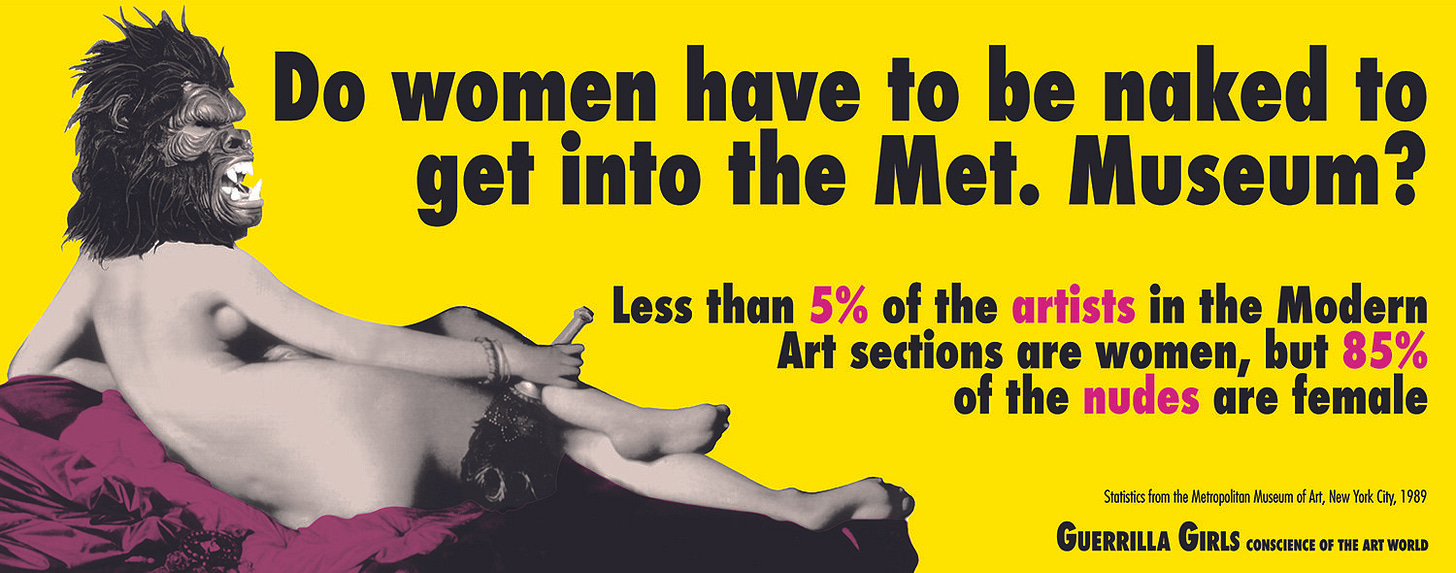

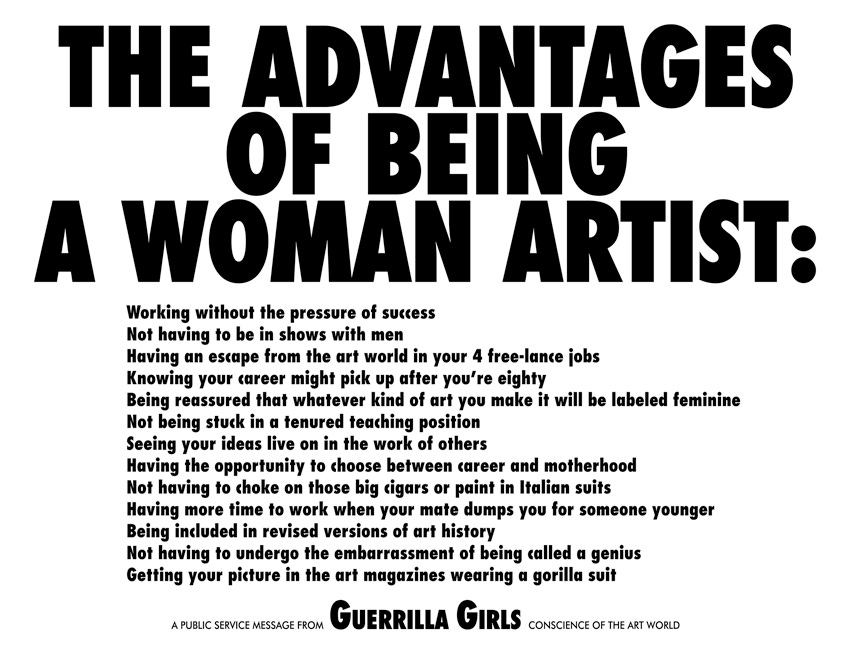
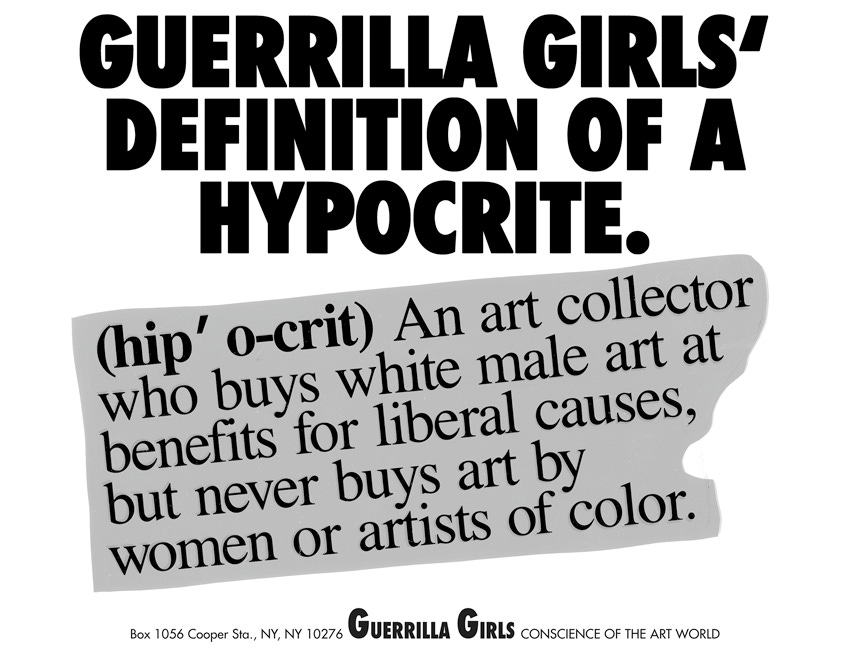
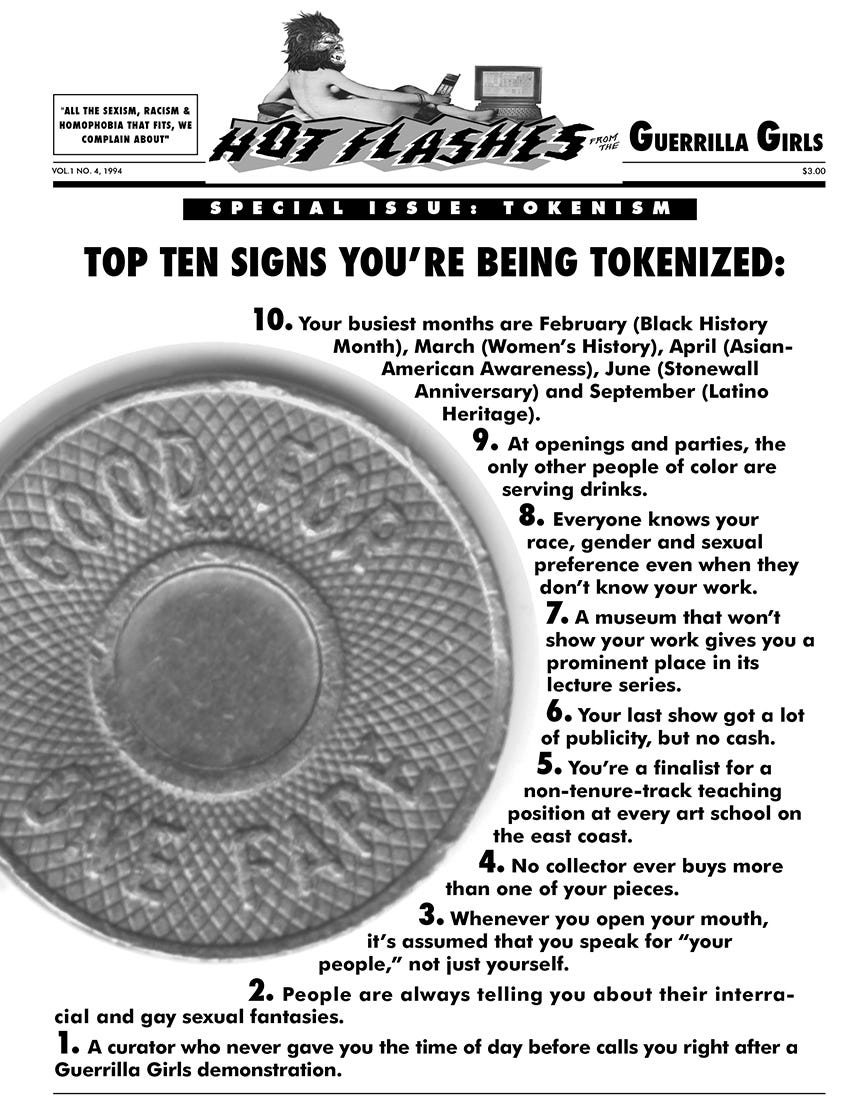
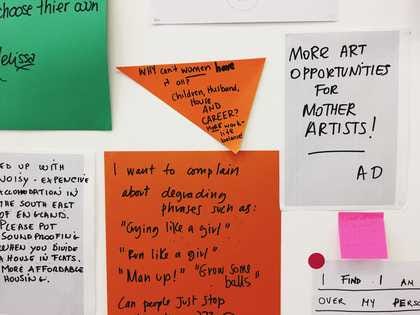



So far, this is one of my favorite stories - love how these guerrillas used language and creativity to eduk8! Brilliant bananas :)